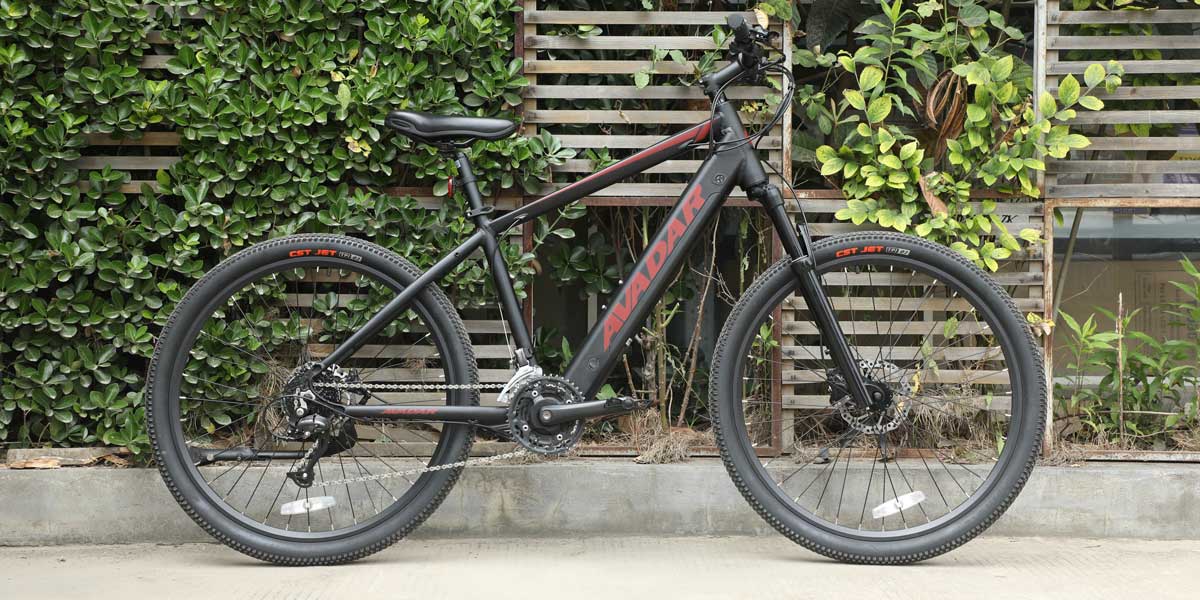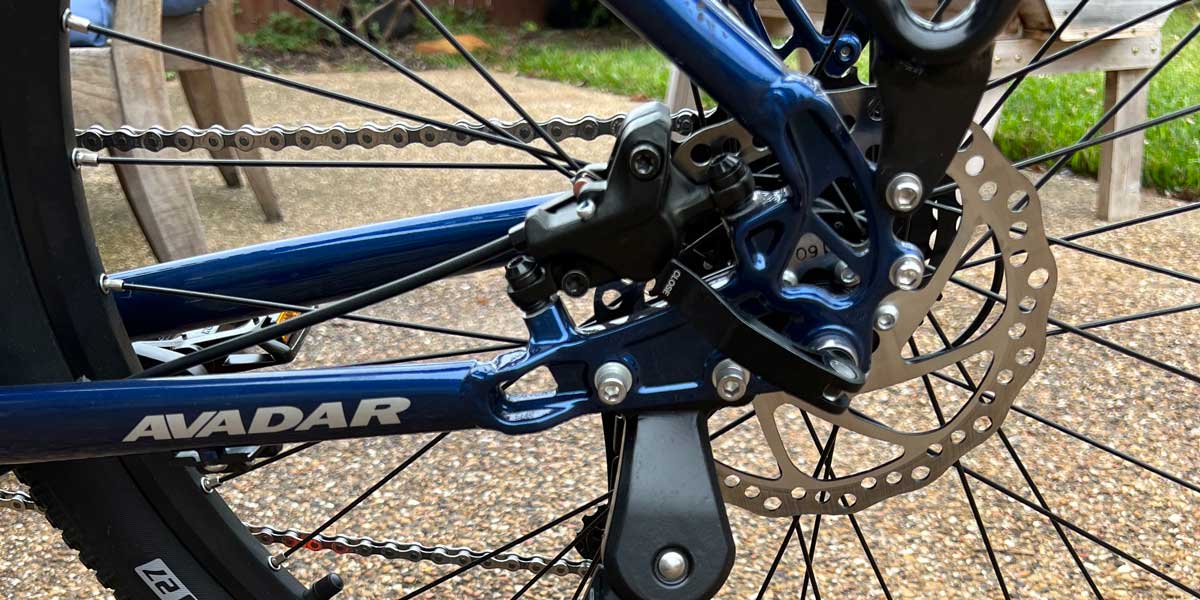How to Use the Brakes Correctly
Today’s bicycle brakes are becoming more advanced as technology advances. Although the shape of bicycle brakes has not changed significantly, the braking power has continuously increased. The bicycle is experiencing several leaps from the first clamp brakes to cantilever brakes, V-brakes, and finally disc brakes.
Brakes are undoubtedly getting better and better, but how can many of the powerful brakes that almost kill the wheels in single braking be properly used and play their rightful role? We have referred to some information, especially about mountain bikes to introduce you to the basic common sense of braking.
The truth about brakes
The first thing to understand is that when you ride a bicycle, whether you use the front brake, the rear brake, or the front and rear brakes at the same time, one thing happens: The rider’s center of gravity shifts forward and pushes against the front wheel. The greater the braking force, the more the center of gravity shifts forward. As weight shifts from the rear to the front, the rear wheel loses weight, and it can easily slide to the side or lift off the ground. If the braking force exceeds the friction of the rear wheels, the rear wheels slip sideways, which is of no use for deceleration.
The same physical principle applies both on the road and in the mountains. When braking, more weight is shifted to the front wheel, which means that the grip of the front wheel is greater; the more grip the front wheels have, the more braking force they can withstand. The more braking force applied to the front wheels, the more effective and easier it is to control deceleration than with the rear wheels.
In short, you can decelerate more effectively with the front brakes than with the rear brakes! Instead of using the rear brakes, as many people think.
Rear brake assist
If you use the front brake properly, you can decelerate the vehicle quickly, and then with the help of a light rear brake you can achieve incredible braking effect. However, to achieve this, the driver must control the brakes carefully. In general, the power of the front brake should be about twice that of the rear brake. Some of the better riders can constantly change the control of the two brakes to achieve maximum braking power.
Start with eyes
For drivers to immediately adapt to the road surface, they need time for the brain to analyze, assess and prepare. The field of vision should be about 10 meters ahead, stay relaxed, pay attention to the changes around you and focus mainly on the situation in front of you.
When looking ahead, pay attention to when and where you brake best. In general, the road surface is relatively flat, but it is necessary to slow down before turning (it is best not to use the brakes when turning); The mountain road conditions are more complicated, it is best to brake when the ground is relatively flat and the grip is sufficient, and not to use the brakes in bumpy and complex terrain, these places will affect the control of the car, the correct way is to slow down in a gentler place before entering the complex terrain, and then let go.
Use your fingers
Use your index and middle fingers to apply the brakes, and hold the handlebars with your thumb and other two fingers, whether it’s a mountain bike or a road bike, so you can keep the handlebars and brakes more stable at the same time. Specifically for mountain bikes, there are some tips such as having one finger on the rear brake and two on the front brake for proper power distribution; there are also some people who like to do the opposite, one in the front and two in the back (so the front brake does not get over-applied and over-rotate). Using two fingers to apply the brakes is a good idea, but these days many brakes (especially disk brakes) are so powerful that one finger is more than enough. For novice riders, there is no reason to use a strong brake from the start, as it is difficult to learn how to use the brakes properly.
Automatic reaction
Brake control becomes best a conditioned reflex, if you have not yet developed such a feeling, it is best to first do exercises in some relatively simple places and practice controlling the brakes to a natural feeling. As soon as the brain feels the need to slow down, the fingers are immediately clamped on the brakes.
When going downhill steeply, the finger should always be on the brake handle, and when going downhill, it may be necessary to constantly apply the front and rear brakes to control speed and direction. As the speed of the vehicle is constantly increasing, the fingers do not have enough time to leave the brake handles.

About grip
Look ahead, assess the situation on the roadway, and choose the right time to brake and slow down. If the car is in a straight line, you can brake hard until the rear wheels begin to slide to the side. Put on the necessary protective gear to practice, then practice on the asphalt road, drive slowly – about 10 highways per hour – and then brake only with the front brakes and hold until the rear wheels begin to leave the ground.
If you practice a little, you can learn not to panic when the rear wheel leaves the ground, and more importantly, you can keep the wheel straight, and front roller skating is this action taken to the extreme. If you turn the handlebars while applying the front brake, you may fall over. Because when the front wheel turns, the wheel only relies on a small part of the pattern on the tire to support and grip the ground, if the brake is turned too much, the front wheel probably will not grip the ground enough and will slide out sideways, and the front wheel will slide on its side, and it will fall.
Body position
Except on smooth surfaces such as asphalt roads, do not sit on the saddle when braking on any other surface. Before braking, stand up slightly to get out of the saddle, squat on the bike, and push your body back onto the back of the saddle. This method serves to balance the rear wheel while shifting the center of gravity forward so that it has enough weight to push on the ground.
Slow down the turn
As you learn to use the front brake effectively and ride with the proper amount of rear brake assistance, you will be able to brake harder and harder on corner entry, but it will be unnatural to ride with maximum braking power. Release the brakes when you begin to lean and turn, and release the brakes completely when you have fully negotiated the turn.
Be Careful
Do not think that you never use the front brake when turning, sometimes the ground is very slippery, the grip of the front and rear wheels is very low, in this case you still need to use the front brake, otherwise the rear wheel will slip out sideways as long as you lightly apply the rear brake. And then you have to rely on technique and feel. Experience will tell you how much grip you have before and after, and how much braking power you can use.
Listen
The best way to learn is to feel the braking limit points of the front and rear wheels, and you can also learn to listen. The sound of the tires when they reach maximum grip during braking is completely different. If you hear a soft crackling sound when braking hard, it means that you are approaching maximum braking force; if the crackling becomes a rubbing sound, it means that the tire has started to slip, not roll. When feeling the brakes, pay attention to the sound of the tires, apply the brakes moderately and try not to make a friction noise.
Exceptions
This is especially for mountain bikes, in the sand and other soft soils do not have to use the front brake, let the front wheel roll as easily as possible through the soft sand or gravel, the rear wheel was deep into the ground, with enough grip to slow down and control the speed. Press your body against the rear wheels and let the front wheels float on the surface to improve handling.
But if you are steeply under the sand, the difficulty is even higher! This is where all the training techniques, sensations and conditioned reflexes come into play. Front brakes may be required due to the higher speed, but experience tells you to keep the handlebars straight and feel if the front wheels still have grip. Extend your arms and lean your body back even further. Your fingers should be on the brake handles so that you can adjust the front and rear brake forces at any time to maintain balance and the running line.
In general, the sixth sense of braking is to sense whether the wheels have reached the limit of grip. Learn to automatically adjust the front and rear brakes to the ground conditions in front of you, and learn to feel the grip of the wheels on the brake handles. But these techniques and feelings can not be learned all at once, but require constant practice and experience, as well as the accumulation of experience. As long as you usually ride a bike with more eyes and more practice, I believe that soon, you can also master the correct use of the brakes, the best result is to be able to use the brakes more effectively, less likely to lose control, and less likely to have accidents.

